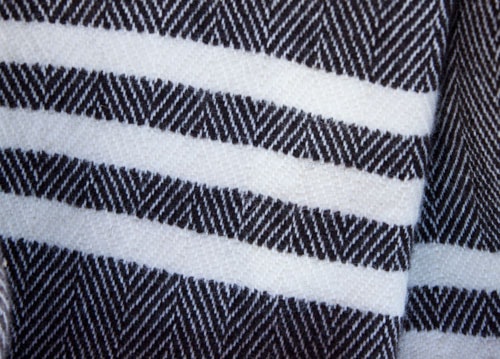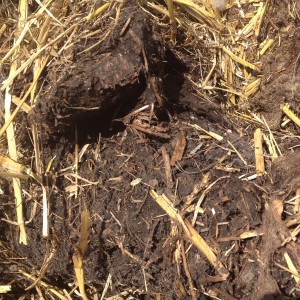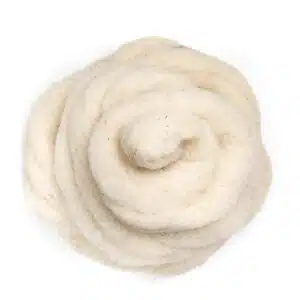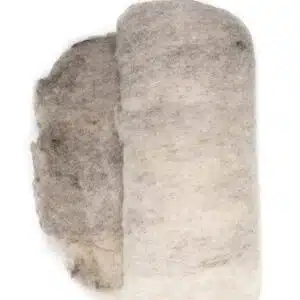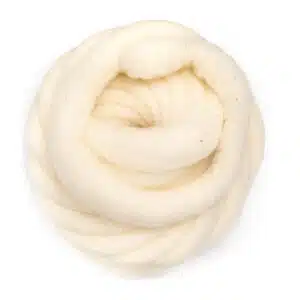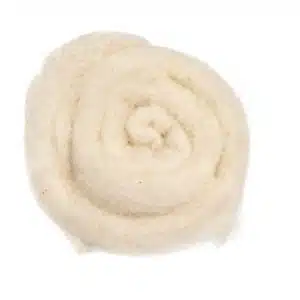Almost one year ago we set out to explore how wool textiles fit within environmentally and socially sustainable consumer choices. Through this blog series we have examined wool as a raw material, how it is processed, what kind of useful applications it has, and how to expand its lifespan to the longest possible time by using the R's of sustainablity - Rethink, Refuse, Reduce, Reuse, Repair, Recycle - as our guide and now, finally, we have come full circle in the supply chain to the last of the R's: Rot. Wool is a completely natural, biological material and, as such, it is fully biodegradable, ie, it rots. That means that when your natural wool item has come to the very end of its useful life, completely exhausting the multitude of reuse, upcycle, and recycle options available, it can be rotted back into the life-cycle acting as nourishing fertilizer for plants which then feed animals which then grow more wool - textiles don't get much more sustainable than that!
Wool - the biological material
Wool is made of the same protein that human hair and nails are, keratin. When broken down into its chemical elements it contains carbon, oxygen, nitrogen, hydrogen, and sulphur in bonds that, under the right conditions of fungal and bacterial activity, will readily break down releasing the base elements to the environment. These bonds also create wool's unique crimped structure of over-lapping protein scales. The scales cause wool to repel large beads of liquid but also to be porous to water vapour, allowing it to hold a high amount of moisture which accounts for wools seemingly contradictory characteristics of being both water repellent and moisture wicking.
Degrading wool directly in soil
Wool can be added directly to soil where the existing fungal and bacterial environment will slowly break it down. This is even the case for processed wool, such as that of an in-tact sweater or scarf. To demonstrate this Prince Charles famously buried a wool sweater in his gardens and after three months dug up the spot showing almost no evidence of the original sweater! Studies have shown (references below) that for long season crops such as tomatoes and basil, or perennial crops such as asparagus, wool added directly to soil can act as a good slow-release source of nutrients (particularly nitrogen), increasing plant yields over multiple harvesting periods. Wool can also be top dressed on gardens to act as natural weed control, prevent soil erosion, moderate moisture levels, and moderate soil temperature. For these reasons, we also use it in the place of peat or burlap in hanging baskets here at the mill.
Composting wool
Composting is the process of degrading organic materials into soil under a more controlled environment of fungal and microbial activity, thereby accelerating the degradation and achieving more uniform results. While it is possible and sometimes advantageous to "rot" your wool directly in the garden there are also good arguments for composting your wool first. If the wool is raw (unwashed) it will be coated in the natural skin oils produced by sheep, such as lanolin, and a mixture of fine dirt, manure, seeds, and plant matter that the sheep collect while out and about their sheepy ways. You may not want to add weed seeds or big hunks of manure directly to your garden but a good compost pile will run hot enough to destroy any weed seeds and pathogens. Initiating the wool degradation process in the compost pile also makes the nutrients in wool more readily available for shorter season plants. Because of wools moisture handling characteristics wool compost is an excellent alternative to peat and, all in all, an excellent resource for garden and potted plants.
Practical considerations for rotting wool
If you are going to undertake the task of rotting your wool in the garden or the compost pile there are a few technical details you should be aware of before you get started.
First remove any inorganic materials like synthetic tags, zippers, and buttons. If you want to use wool on top of your garden for weed control leave it in blocks of fabric or intact raw clumps of fleece. If you want to compost it or add it to soil as a fertilizer and water retainer you should work it into pieces - the smaller the better - by cutting up old wool fabric and picking raw wool into tufts. This makes turning the compost pile easier, distributes the nutrients around a bit, and ultimately helps speed up degradation. In a well maintained compost pile wool will take 3 to 6 months to degrade.
Whenever possible use wool in its most natural form - minimally processed, undyed or naturally dyed. This minimizes the environmental impact of its initial processing as well as ensures a nice, natural, rotted product in the end for growing plants in (though everything we've read indicates composting synthetically dyed wool is just fine also).
Wool has a low carbon to nitrogen ratio and is considered a nitrogen feedstock for compost. All of the literature we have read recommends keeping the amount of wool you have in your compost pile below 25% volume and mixing in other nitrogen sources such as manure or vegetable waste.
Wool has an acidifying effect on soil. This is great for acid loving plants or for moderating severely alkali soils likes those on the Alberta prairie. For neutral soils or soils that are already too acidic for your plants be sure to balance wool with something like potash.
References:
Hussman R, Chaw D, Tompkins D, Abiola A, Clark T, Krall T (1997). Composting of wool industry waste as an alternative waste disposal method. Composting Technology Centre, Olds College. Prepared for: Custom Woolen Mills.
Gorecki RS, Gorecki MT (2010). Utilization of waste wool as substrate amendment in pot cultivation of tomato, sweet pepper, and eggplant. Polish J. of Environ. Stud. 19(5): 1083-1087.
Hustvedt G, Meier EJ, Waliczek TM. The feasibility of large-scale composting of wool waste. Green Fashion Volume 1 Chapter 4 (2016). Springer Singapore.
Suruchi G, Anshumala S, Sarika S, Narindra B (2014). Growth, macro and micronutrient concentration in clusterbean plant tissue as well as in soil when amended with wool as fertilizer. J. Environ. Res. Develop. 8(3A): 607-613.
Voncina A, Mihelic R (2013). Sheep wool and leather waste as fertilizers in organic production of asparagus. Acta agriculturae Slovenica. 101-2.
Zheljazkov V (2005). Assessment of wool waste and hair waste as soil amendment and nutrient source. J. Environ. Qual. 34: 2310 -2317.
Zheljazkov V, Stratton GW, Pincock J, et al. (2009). Wool-waste as organic nutrient source for container-grown plants. Waste Management. 29: 2160-2164.


